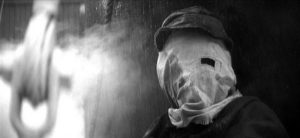

THE ELEPHANT IN THE ROOM: Who Was Jack The Ripper?
(part 2 of 4 part report)
“I was in a delirium of destruction, as if the body were an
insult to the philosophy of my life, and only in destroying
it could I reclaim my sanity.”
― Stephen Hunter, I, Ripper
In the first part of this report, I detailed the tragic tale of Joseph Merrick, “The Elephant Man,” and his life living in London at the end of the 19th century. In the Hollywood film of the same name, Mr. Merrick befriends a doctor who ushers him into the luxurious world of high society.
Dr. Treves seemingly saved “The Elephant Man” from continued harassment as a sideshow freak. He brought him to the Royal London Hospital where he worked across the street. This area at the time was known as Buck’s Row, and it had a large population of prostitutes who were known to be operating in and around the district of Whitechapel and the hospital where Dr. Treves worked and “The Elephant Man” was housed.
An online essay on Whitechapel during this period recalls the squalor:
“Whereas men led subsistence level lives founded upon meagre wages, the lot of the Whitechapel woman was even worse, particularly when one considers that many were young girls who had fled to the area from hardship in some other part of the country or, as was just as common, from Ireland. Prostitution was rife resulting in a figure of 20000 prostitutes working in London alone in 1860 with a great many of these operating in and hailing from Whitechapel.”
When five mutilated female corpses turned up between end of August and November in this area back in 1888, a number of potential suspects were named, but the actual killer was never officially caught.
I already established that Joseph Merrick moved in Royal London Hospital which was in the immediate area of all 5 slayings.
In fact, the hospital is literally only minutes away from the location of most of the Ripper’s kills.
He took residency there around 1886 until he died in 1890. Not one single homicide was committed the year before The Ripper killings went down in 1888. So think about that… there is a dormant time and then all Hell breaks loose.
Pictured: Dr. Treves
Was Joseph actually hiding homicidal fascination?
Did he one day while living at the Royal London Hospital decide to actually live out his nightmare fantasies of getting revenge on the women who screamed in terror whenever they saw him?
Or was the brilliant Dr. Treves the one behind the killing blade? It’s certainly possible that he received help covering up the fact that he was indeed Jack The Ripper. For this theory to hold water, however, I firmly believe that assistance would need to come from within Scotland Yard.
After some diligent research, I can confirm now that I have found that person.
In an interview (Daily Chronicle, 1 September 1908) about the contamination of crime scenes and destruction of evidence occurred in both the 1908 Luard murder case & 1888 Whitchapel murders, a former policeman named Robert Anderson said:
“Something of the same kind happened in the Ripper crimes. In two cases of
that terrible series there were distinct clues destroyed – wiped out absolutely –
clues that might very easily have secured for us proof of the identity of the
assassin. In one case it was a clay pipe. Before we could get to the scene of the murder
the doctor had taken it up, thrown it into the fire-place and smashed it beyond
recognition. In another case there was writing in chalk on the wall – a most valuable clue;
recognized as belonging to a certain individual. But before we could secure a
copy, or get it protected, it had been entirely obliterated…”
As the story goes, Mr. Anderson was the Assistant Commissioner, Metropolitan Police CID. He was also named as a suspect in Jack the Ripper: The Final Solution and as a co-conspirator in The Ripper and the Royals.
“In 1901, Anderson retired from the Metropolitan Police and received a knighthood. Police Review (14 June 1901) claimed his deep religious convictions and lack of ‘the requisite kind of knowledge of the world and men’ had made him an ill choice for the position of Assistant Commissioner CID.”
In his memoirs, The Lighter Side of My Official Life, Anderson referred to the Ripper murders, stating “he spent the day of his return reviewing the available facts and the following day had a conference with Sir Charles Warren and the Home Secretary, Henry Matthews. The latter charged him with the responsibility of finding the murderer, to which Anderson retorted that he would hold himself responsible for taking ‘all legitimate means to find him’.”
Anderson ordered a ‘house to house’ search in Whitechapel. He believed it was a “Jew” who committed the crimes, due to recent influx of immigrants that moved into the area at that time. Beyond his racist comment being totally out of line for someone who is supposed to hold no bias during an investigation, it points to it all being part of the sensational cover up.
He wanted to plant that idea in the public so that it would taint the case… and keep eyes off the identity of The Ripper.
Why? Was he covering for Dr. Treves… or maybe even himself?
In 1892, in Cassell’s Saturday Journal, Anderson (in response to an interviewer who appears to have asked him about Ripper theories) produced photographs of the victims and said, ‘There, there is my answer to people who come with fads and theories about these murders. It is impossible to believe they were acts of a sane man – they were those of a maniac revelling in blood’ (Cassell’s Saturday Journal, 11 June 1892).
Why was Anderson working so hard to push a narrative so quick out the gate? He obviously targets the Jewish community and says that without a doubt the killer is mentally deranged.
What if it was a royal bloodline Satanist with elite standing in society who lusts after human flesh? What if it was a medical student who needed to sell the organs to cover his or her tuition? How can Anderson call himself open minded to conducting a thorough investigation on behalf of the people if he is only willing to look in one direction?
“The searches began on 3 October 1888 and completed on 18 October, and therefore took place after Anderson returned from abroad and not, as he claimed, while he was away, but it appears to have been conceived and organized during his absence. The now-famous ‘Police Notice – To the Occupier’ handbill prepared for the house-to-house investigation and left at every house visited by the police is dated 30 September 1888 and does not refer to the Double Event. No mention of this theory has been found in surviving documents and Anderson acknowledged in a memo to the
Home Office dated 23 October 1888 that the investigation lacked direction:
‘That a crime of this kind should have been committed without any clue being supplied by the criminal, is unusual, but that five successive murders should have been committed without our having the slightest clue of any kind is extraordinary, if not unique, in the annals of crime’
Upon further analysis, I feel Joseph Merrick did not seem to possess the incredible physical prowess needed to pull of such spectacular string of slayings. Due to a vast portion of his body being deformed and maligned with horrendous boney growths and extra pouches of skin that hung awkwardly, one would think that “The Elephant Man” would have difficulty attempting to try and have sex.
In his mid-twenties when the murders happen, certainly he would be at the height of his sexual interest. It would seem this could possibly be the catalyst behind someone’s frustration and intense rage… which was directed upon the five female victims.
Jack The Ripper.org site describes the scene in Whitechapel nearly 130 years ago:
“In 1888, the area was made up of lots of narrow, unlit alleyways and passageways and it was the labyrinth-like layout of the area that enabled Jack the Ripper to commit his crimes and then melt away into the night.”
Obviously, Joseph was a very tortured individual, trapped with a well-functioning brain inside a monstrosity of a body.
Dr. Treves, on the other hand, is what I like to call the “Sleeper” of all potential suspects, because honestly, he is the least one you would expect, right? After all, he has a legendary reputation and has forever been immortalized as such a wonderful man as he was depicted by Oscar winning actor Anthony Hopkins.
Let us not forget what role snagged him that Oscar. Yes, he played a serial killer that carved up people and ate their organs.
The first murder of the five that took place in Whitechapel in late 1888 happened right out in the open.
A Christian woman who had fallen on hard times and turned to selling sex acts for quick money was the first to die.
As the story goes, “Polly moves to a lodging house known as the White House at 56 Flower and Dean Street. In this doss-house men are allowed to share a bed with a woman.”
Casebook.org site breaks down the timeline for the first slaying:
Thursday, August 30 through Friday, August 31, 1888.
“Heavy rains have ushered out one of the coldest and wettest summers on record. On the night of August 30, the rain was sharp and frequent and was accompanied by peals of thunder and flashes of lightning. the sky on that night was turned red by the occasion of two dock fires.”
11:00 PM — Polly is seen walking down Whitechapel Road, she is probably soliciting trade.
12:30 AM — She is seen leaving the Frying Pan Public House at the corner of Brick Lane and Thrawl Street. She returns to the lodging house at 18 Thrawl Street.
1:20 or 1:40 AM — She is told by the deputy to leave the kitchen of the lodging house because she could not produce her doss money. Polly, on leaving, asks him to save a bed for her. ” Never Mind!” She says, “I’ll soon get my doss money. See what a jolly bonnet I’ve got now.” She indicates a little black bonnet which no one had seen before.
2:30 AM — She meets Emily Holland, who was returning from watching the Shadwell Dry Dock fire, outside of a grocer’s shop on the corner of Whitechapel Road and Osborn Street. Polly had come down Osborn Street. Holland describes her as “very drunk and staggered against the wall.” Holland calls attention to the church clock striking 2:30. Polly tells Emily that she had had her doss money three times that day and had drunk it away. She says she will return to Flower and Dean Street where she could share a bed with a man after one more attempt to find trade. “I’ve had my doss money three times today and spent it.” She says, “It won’t be long before I’m back.” The two women talk for seven or eight minutes. Polly leaves walking east down Whitechapel Road.
PC Neil discovers Nichols’ body in Buck’s Row, from Famous Crimes Past and Present, 1903.
Pictured: Mary “Polly” Nichols
According to my research Satanic ritual sacrifice must take place during the hour of 3AM, preferably when there is a full moon out, and this is so that homage can be paid to the demon named Baal. He is also the reason behind cannibalism… for that is who is being honored when a Christian’s flesh is being devoured.
At the time, the services of a destitute prostitute like Polly Nichols could be had for 2 or 3 pence or a stale loaf of bread. 3 pence were the going rate as that was the price of a large glass of gin.
3:15 AM — PC John Thain, 96J, passes down Buck’s Row on his beat. He sees nothing unusual. At approximately the same time Sgt. Kerby passes down Buck’s Row and reports the same.
3:40 or 3:45 AM — Polly Nichols’ body is discovered in Buck’s Row by Charles Cross, a carman, on his way to work at Pickfords in the City Road., and Robert Paul who joins him at his request. “Come and look over here, there’s a woman.” Cross calls to Paul. Cross believes she is dead. Her hands and face are cold but the arms above the elbow and legs are still warm. Paul believes he feels a faint heartbeat. “I think she’s breathing,” he says “but it is little if she is.”
The two men agree that they do not want to be late for work and after arranging Nichols’ skirts to give her some decency, decide to alert the first police officer they meet on their way. They eventually meet PC Jonas Mizen at the junction of Hanbury Street and Baker’s Row and tell him of their find.
Inquest testimony as reported in The Times:
“Five teeth were missing, and there was a slight laceration of the tongue. There was a bruise running along the lower part of the jaw on the right side of the face. That might have been caused by a blow from a fist or pressure from a thumb. There was a circular bruise on the left side of the face which also might have been inflicted by the pressure of the fingers. On the left side of the neck, about 1 in. below the jaw, there was an incision of about 4 in. in length and ran from a point immediately below the ear. On the same side, but an inch below, and commencing about 1 in. in front of it, was a circular incision, which terminated at a point about 3 in. below the right jaw. That incision completely severed all the tissues down to the vertebrae. The large vessels of the neck on both sides were severed. The incision was about 8 in. in length. the cuts must have been caused by a long-bladed knife, moderately sharp, and used with great violence. No blood was found on the breast, either of the body or the clothes. There were no injuries about the body until just about the lower part of the abdomen. Two or three inches from the left side was a wound running in a jagged manner. The wound was a very deep one, and the tissues were cut through. There were several incisions running across the abdomen. There were three or four similar cuts running downwards on the right side, all of which had been caused by a knife which had been used violently and downwards. the injuries were form left to right and might have been done by a left-handed person. All the injuries had been caused by the same instrument.”
Inspector Joseph Helson, J-division, is notified of the murder at 6.45am and at the mortuary he is shown the body and the extent of the mutilations.
Despite her shortcomings, Polly seemed to have been well-liked by all of the people who knew her. At the inquest her father says, “I don’t think she had any enemies; she was too good for that.”
After his first examination of “The Elephant Man”, Dr. Treves noted that his right hand was partially lame due to it being oversized. However, his left arm and hand were not large and were not deformed.
His penis and scrotum were normal.
Aside from his horrific deformities and a ‘lameness’ in his hip, Dr. Treves concluded that Merrick appeared to be in good overall physical health.
Pictured: Joseph Merrick, “The Elephant Man”
(c. 1889 as a Carte de visite. This photograph was first published in
The Elephant Man: A Study in Human Dignity by Ashley Montagu. Image:
Royal London Hospital Archives)
“Another trouble was his dread of his fellow-
men, his fear of people’s eyes, the dread of being
always stared at, the lash of the cruel mutterings
of the crowd. In his home in Bedstead Square he
was secluded; but now and then a thoughtless
porter or a wardmaid would open his door to let
curious friends have a peep at the Elephant Man.
It therefore seemed to him as if the gaze of the
world followed him still.”
“Influenced by these two obsessions he became,
during his first few weeks at the hospital, curiously
uneasy. At last, with much hesitation, he said
to me one day : ” When I am next moved can I
go to a blind asylum or to a lighthouse? ” He
had read about blind asylums in the newspapers
and was. attracted by the thought of being among
people who could not see. The lighthouse had
another charm. It meant seclusion from the
curious. There at least no one could open a door
and peep in at him. There he would forget that
he had once been the Elephant Man. There he
would escape the vampire showman.”
– Dr. Treves
It’s interesting that Dr. Treves used the term “vampire” when describing someone else.
Did you know that “The Elephant Man” was very gifted at using a sharp blade to cut the cardboard pieces used for his miniature creations? The beautiful church seen below was made by Joseph. It is currently on display at the Royal London Hospital.
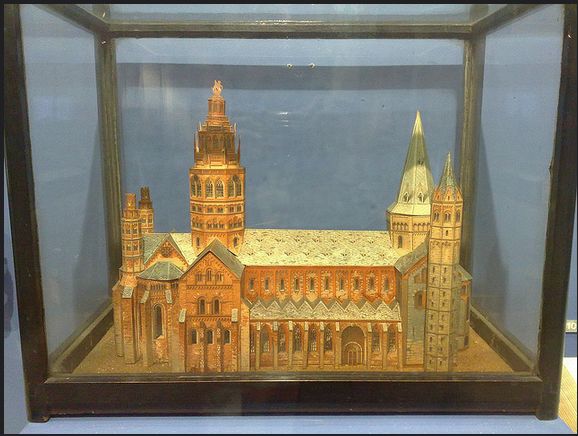
The likelihood that Joseph had a secret way to enter his living quarters in the basement of the hospital is quite strong, due to the fact that he did not want to be seen by a lot of people as he came and went.
Pictured: Bust of “The Elephant Man” by Paul Komoda
In 2016, “supporters of the ‘Elephant Man’ have demanded he be brought back to Leicester to receive a proper Christian burial. The Queen Mary University of London, part of the Royal London Hospital, claims Mr. Merrick ‘expected to be preserved after his death’ – and will keep the skeleton.”
Valerie Howkins, 83, the granddaughter of showman Tom Norman, the man who first discovered Joseph, wants the authorities to bury his bones in his hometown.
In a cruel twist of fate, she points out how Joseph ended up just like the victims of The Ripper.
She told the BBC: ‘It’s just so sad that he had his flesh stripped from his bones and has been mounted in a glass cabinet for 120 years against his will.”
As I continue my independent death investigation for the Whitechapel murders of 1888, I find myself viewing each of these vicious slayings not as their own individual acts of homicidal savagery carried out my a mentally deranged person, but I now strongly feel that these murders were all connected and there was a specific reason for this. While many investigators over the years have thrown around their crazy theories, my belief that Jack The Ripper was a hardcore devil worshiper has only been touched upon by a few other writers who have been working on the case over the years.
Author Ivor Edwards put out a book on the subject, along with world famous Ripper investigator Mike Covell who wrote a novel titled Jack The Ripper – The Black Magic Myth, and they certainly back up my theory.
Covell details the grim reality we are looking at:
“Many black magick rituals required the inclusion of horrifying substances and ingredients. From both human and animal body parts to other sinister items, this could prove to be a reason for the terrible mutilation of the victim’s bodies.”
Both men assert a doctor named Robert Donston Stephenson is The Ripper. Although I disagree with them on that and have selected my own top two potential suspects who are being featured in this special four-part report, the fact that all three of us investigating the matter believe there is a major Satanic ritual tie-in is critical to moving forward in the best possible direction as we each continue trying to solve the legendary murder spree.
A historical blog takes us back:
“When the investigation was closed in 1892, four years after the events, there was not a suspect strong enough to be detained. Thomas Bond, one of the forensic examiners of the case, outlined a criminal profile of the murderer: “It is very probable that the murderer has a harmless appearance, a man of middle-aged, well-groomed and respectable air. Possibly wear coat, for if not, the blood on his hands and clothes would have caught the eye.”
Essayist Hannah Irwin conveys the sadistic killer as being one who dabbles in the mystical art of black magick. She references an early work of Ripperature that will make your blood run cold.
Samuel E. Hudson’s book Leather Apron; or, the Horrors of Whitechapel, London, was published in December 1888.
Hudson writes Jack as a “Gothic monster, an atavistic and savage creature prowling Whitechapel to satisfy his bloodlust.” Jack is tied to several Gothic tropes in Hudson’s work and is described as different types of beasts. Hudson calls Jack: a “fiend bearing a charmed and supernatural existence,” a “human vampire”, an “incarnate monster” and the perpetrator of “ghoulish butchery.”
Some have even made the comparison with Jack to Dr Jekyll and Mr Hyde.
You’re in for surprise
You’re in for a shock
In London town streets
When there’s darkness and fog
When you least expect me
And you turn your back
I’ll attack
– JUDAS PRIEST – “The Ripper”
As I reported previously on another sensational murder cover up, starring two late rock stars who ended up suicided last year, all signs point to it coinciding with the major Satanic holiday called “Grand Climax”… no, I am not making this stuff up.
Did you know that the Satanist gains power from wearing a “Dead Skin Mask?”
“Another key piece of evidence which supports this theory is the fact that the locations of the murders form a cross when outlined on a map, with connecting lines drawn between the sites. While this may first appear to be a rather tenuous link, the defamation of holy and religious symbols like the cross was another big part of black magick.”
It is my determination, along with author and historian Mike Neville, that Jack the Ripper most certainly had a Masonic connection.
Mr. Neville established Masonic links to Scotland Yard, and I believe that is very important, in terms of being able to look at the bigger picture and not just what is right in front of your face. In his book titled “Crime & The Craft”, he explores the tie in.
“Crime and the Craft: Masonic Involvement in Murder, Treason and Scandal reveals the Freemasons who have been involved in murder, treason, skulduggery and scandal from the time of the English Civil War to the 1980s. Nearly every infamous case investigated by Scotland Yard, including Jack the Ripper, Oscar Wilde, Dr Crippen, the Great Train Robbery and Kray twins, is shown to have Masonic involvement…”
While he claims a man named Kenneth Noye is the strongest suspect, I again disagree, but feel that a lot of his ideas on the case are spot on correct.
The sad truth is that under the care of renowned surgeon, Dr. Frederick Treves, Joseph Merrick had left the freak show only to be turned into an even bigger attraction at London’s biggest hospital at the time. At one point, Dr. Treves was a high-ranking Red Cross official, which is key in understanding how he could potentially be Jack The Ripper.
Treves was a pioneer in abdominal surgery, one of his most famous operations being to treat Edward VII for appendicitis in 1901 two days before the King’s coronation. He was made a baronet in 1902, is credited with carrying out the first appendectomy in England in 1888.
Oddly enough, that same year is when a purported madman disembowels and dismembers 5 women in Whitechapel while Dr. Treves is working at Royal London Hospital.
In his own words, Dr. Treves describes his early life while serving in war. Major Frederick Boileau Treves was a member of the Royal Army Medical Corps:
“The South African War, of which this Tale is told, is already near to be forgotten, although there are many to whom it still remains the most tragic memory of their lives. War is ever the same: an arena, a glare with pomp and pageant, for the display of that most elemental and most savage of human passions, the lust to kill, as well as a dumb torture place where are put to the test man’s fortitude and his capacity for the endurance of pain.”
FREDERICK TREVES.
THATCHED HOUSE LODGE,
RICHMOND PARK, SURREY.
November 1912.
Looking at one of his last known addresses, it’s clear to see that Dr. Treves resided in a British royal residence occupied by members of the British royal family in the United Kingdom. The Crown Estate is a collection of lands and holdings in the UK belonging to the British monarch.
Pictured: Example of incisions from appendectomy surgery
The exact cuts with a blade that would be made during an appendectomy surgery are inflicted among the many wounds to the victim’s stomach area. Compare the wounds of the first Ripper victim, Polly Nichols, illustrated in the below diagram.
Dorset life site fills in more of the doctor’s background… specifically the time when his critical error led to the death of his own daughter:
“Treves was considered one of the world’s leaders in all things ‘appendix’ but he had made a number of poor judgments over the years, one of which had led to a tragedy. In 1900, his eighteen-year-old daughter, Hetty, developed severe abdominal pain. Treves was sure it wasn’t appendicitis, but he was wrong and his hesitation to operate, meant that Hetty developed peritonitis and died. Treves never hesitated again; the future King’s life was probably saved due to Hetty’s untimely death. An indebted King Edward VII commanded that the whole British Empire raise their glasses and toast Sir Frederick Treves. The Dorset lad had reached the pinnacle of his fame.”
Did the doctor poison his daughter and then let her die as part of a Satanic ritual? It’s not uncommon for a member of a coven to be forced to sacrifice a loved one, ask around. This is the harsh reality of being royalty.
Sir Frederick Treves passed away on December 7, 1923, at the age of 70, in Lausanne, Switzerland.
In a cruel twist of fate, it was peritonitis that caused his death. In the days before antibiotics, peritonitis typically resulted from a ruptured appendix.
During the last World war, staff from the Tavistock Clinic were said to have filled key roles in British Army psychiatry. Joined with their colleagues in the Royal Army Medical Corps and the British Army, they were ultimately responsible for the innovation of psychological warfare.
The Ripper was a British government psyop carried out on the citizens of London, to serve as a mind control weapon. The anxiety and panic that was created by elevating the madman responsible to a mythical status laid the groundwork for the Illuminati to gain the upper hand on the masses. This was the birth of the serial killer.
A very similar thing happened in the infamous “St. Valentine’s Day Massacre” back in the 1920s in Chicago, Illinois. My family was connected to legendary gangster Al Capone, and I was made privy that it was an inside job pulled off by the police. It was done to turn the public against Mr. Capone who had grown too popular for their liking. I wrote a feature length screenplay titled “Public Enemy Number One”. It is copyrighted and available for viewing on Scribd if you’re interested in learning the truth.
Sir William Blizzard was a surgeon at the Royal London Hospital in the 1700s and he kept on location what is called a surgical dismemberment kit, that is proudly on display at the Hospital’s museum today among many Jack The Ripper artifacts.
Could this indeed be the instrument that was used to saw off women’s body parts during The Whitechapel murder spree?
Has it ever been tested for DNA to see if it matches up with any of the victims? I’d be willing to bet the farm that if Scotland Yard was pressed on the subject, they would have to admit that it wasn’t. How long has it been on display? Was the dismemberment kit ever used by other doctors at Royal London Hospital… such as Dr. Frederick Treves?
Without a doubt the only person in and around the Royal London Hospital with access to this dismemberment kit would
be only one person: the surgeon of the hospital.

In my opinion, the person who committed these horrific murders had to have tremendous knowledge of the layout and design of the confusing, maze-like streets in the district of Whitechapel. It would therefore not be a new immigrant as was first suggested by Scotland Yard, understand?
This individual knew how to weave in and out of darkness, using his knowledge of the streets to his advantage. There was a dozen beat cops patrolling this part of the city. One false move and he could have been easily caught.
Certainly Dr. Treves would be one of the people who is most familiar with this area. In accordance with all that I know to be right and proper, I now formally withdraw Joseph Merrick as a potential suspect in the Whitechapel murders. I don’t believe he had the sheer brute strength or incredible physical stamina, along with running speed, that Jack The Ripper needed at a moment’s notice.
I feel that along with the 5 women who were killed, Joseph as well has been slaughtered, both physically and spiritually. He was the perfect diversion for the freemasons to hide behind as they pulled off the first “false flag” to become a worldwide media sensation as The Ripper killings did.
The tale of “The White Elephant” will break your heart when thinking about Joseph Merrick.
“The legend of the white elephant began in Southeast Asia, the home of the White Elephant. In metaphysics we learn that any animal represented by the color white, supposedly is linked to mystical legends, giving it greater power. White represents purity, the Light. Elephants represent power and peace. When the trunk is lifted it means overcoming obstacles.
In the story of the Buddha, the white elephant is connected to fertility and knowledge. On the eve of giving birth to the Lord Buddha, his mother dreams that a white elephant comes to present her with a lotus, symbol of purity and knowledge.”
“If I could reach from pole to pole
or grasp the ocean with a span,
I would be measured by the soul
The mind’s the standard of the Man.”
– Joseph Merrick, “The Elephant Man”
“In legend the Royal White Elephant brought sacred power. It brought fertility. For the kings of Burma and Siam, the possession of these sacred beasts became very important. A king who had many fine white elephants would be successful – his kingdom would prosper, and his reign be long.”
Turning my complete attention on Dr. Frederick Treves now, the only man in my mind who fits the role of Jack The Ripper better than any other suspect brought forth to this point. I am the first investigative journalist to name Dr. Treves as the primary suspect, and my gut tells me there is a reason for that too. I believe a systematic cover up has happened all the way from the royalty in England to the freemason backed news media and police forces.
Sure, Dr. Treves appeared calm, cool and collected on the outside, but what he hid from the public was a monster that this world had never experienced before… and not since.
Back in London during the late 19th century, prostitutes would seek out customers by hanging out drinking at popular spots in and around Whitechapel. These women were frowned upon, spat upon even by proper citizens in society at this time.
The Royal Illuminati/freemason connection with Dr. Treves is irrefutable.
As the story goes, Truman’s Black Eagle Brewery was first built in 1660 on land belonging to John Stott who was also responsible for the layout of streets within its grounds.
The brewery itself began operating in 1666 when Joseph Truman acquired the land when the industry was beginning to expand in the late 17th century. In that debut year The Mark of The Beast is signified.
It was located on legendary Brick Lane, which is a busy section of town running south from Bethnal Green Road to Whitechapel High Street, parallel to Commercial Street.
Brick Lane is well known for its street market and was walked by many East End prostitutes during the 1880s.
All 5 of our murder victims most assuredly made their way down brick lane at some point during their final years on earth, searching for a date.
What do they call solicitors of prostitution? They are called “Johns.” A nickname given to anyone with the name of “John” is typically what? They are called “Jack.”
Casebook.org site provides us with the first Ripper victim’s forensic analysis during postmortem exam:
“The facts are that Constable John Neil was walking down Buck’s-row, Thomas-street, Whitechapel, about a quarter to four o’clock this morning, when he discovered a woman between 35 and 40 years of age lying at the side of the street with her throat cut right open from ear to ear, the instrument with which the deed was done traversing the throat from left to right. The wound was about two inches wide, and blood was flowing profusely. She was discovered to be lying in a pool of blood.
She was immediately conveyed to the Whitechapel mortuary, when it was found that besides the wound in the throat the lower part of the abdomen was completely ripped open, with the bowels protruding. The wound extends nearly to her breast and must have been effected with a large knife.”
“As the corpse lies in the mortuary it presents a ghastly sight. The victim seems to be between 35 and 40 years of age and measures five feet two inches in height. The hands are bruised, and bear evidence of having engaged in a severe struggle. There is the impression of a ring having been worn on one of deceased’s fingers, but there is nothing to show that it had been wrenched from her in a struggle. Some of the front teeth have also been knocked out, and the face is bruised on both cheeks and very much discolored. Deceased wore a rough brown ulster, with large buttons in front. Her clothes are torn and cut up in several places, bearing evidence of the ferocity with which the murder was committed.”
For further reading of Rocket’s acclaimed #Truth reports, check out:

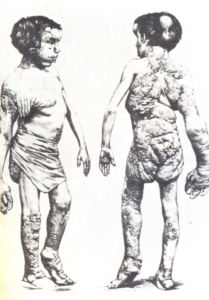
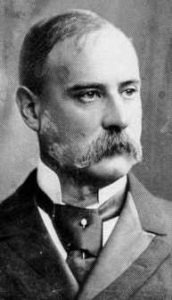
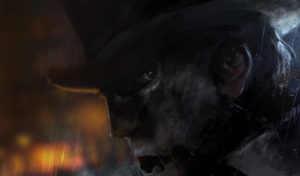
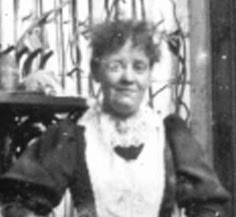
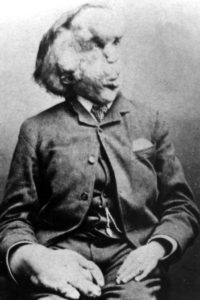
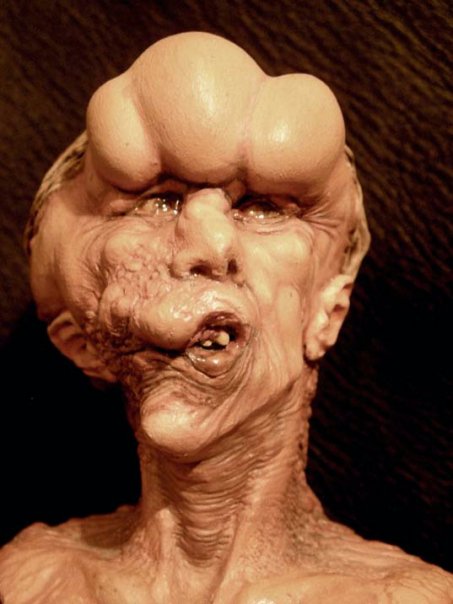
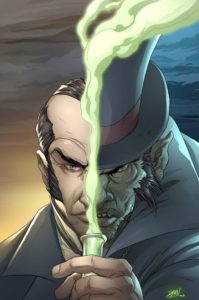

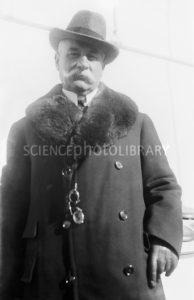
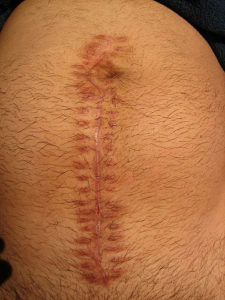
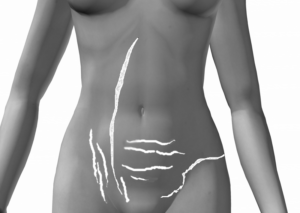

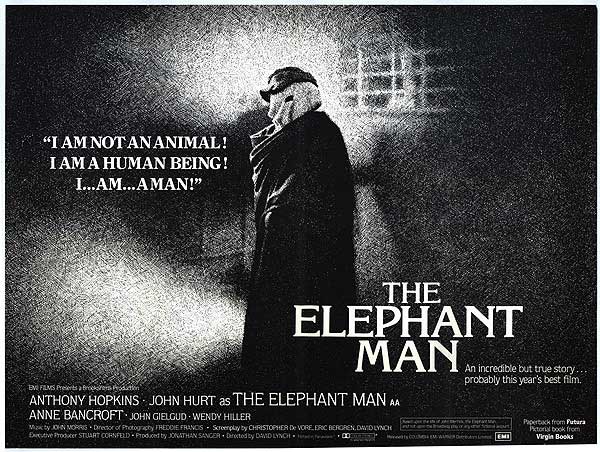
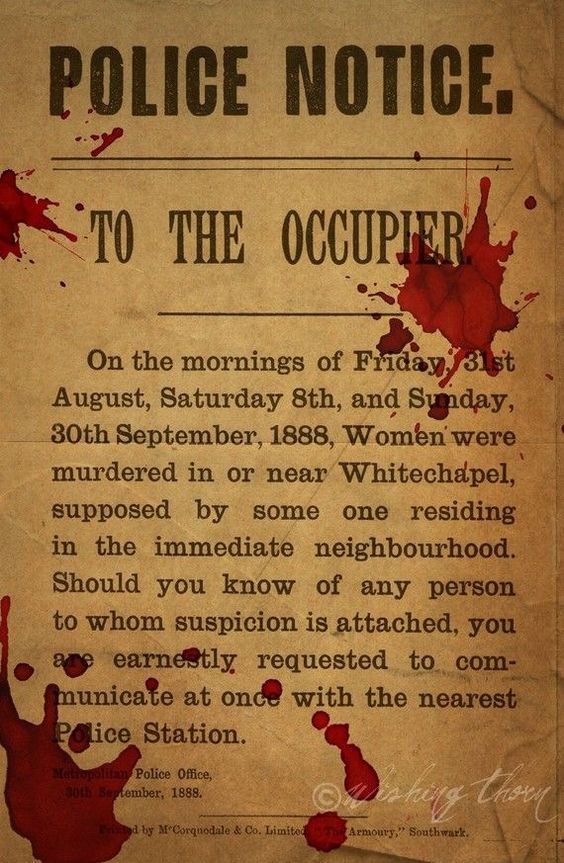




More Stories
Rocket of THE METAL DEN is a Lineal Descendant of Odin and Thor: “All royalty descends from the all-father!”
P. Diddy’s White Parties: The Criminal Connection with MÖTLEY CRÜE’s Tommy Lee
The Dark Side of Fame: How Substance Abuse in Rock Music Leads to Self-Harm & Physical Violence